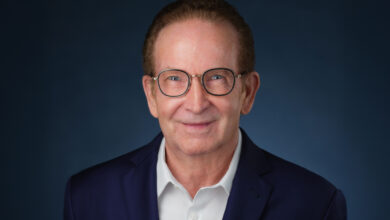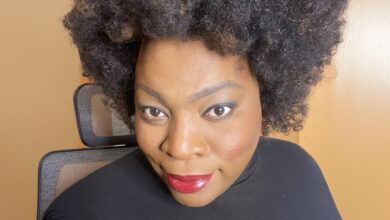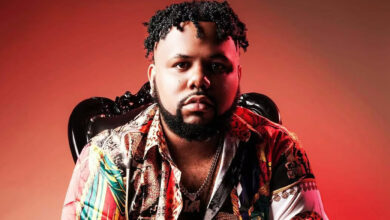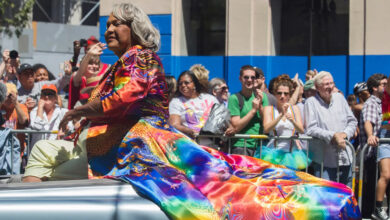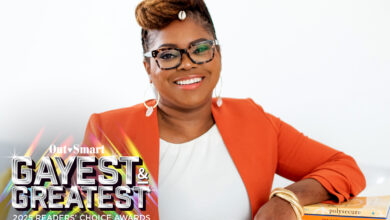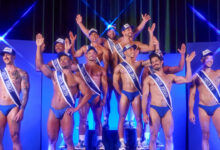Navigating the 35th World AIDS Day
J Maxey’s journey as a Black queer advocate.

This is the 35th year World AIDS Day has been commemorated as a platform to raise awareness about HIV and to honor those who are impacted by the virus, along with those who have lost their lives in this epidemic. Overwhelmingly, the epidemic still disproportionately affects Black and African American gay, bisexual, and other men who sleep with men, who account for 26% of new HIV diagnoses. The Ending the HIV Epidemic (EHE) plan laid out by the Centers for Disease Control to reduce new HIV transmission by 90% by 2030, focuses on four components: diagnosing those with HIV as early as possible, treating people with HIV rapidly and effectively to reach sustained viral suppression, preventing new HIV cases through proven interventions, and responding to HIV outbreaks quickly to get necessary prevention and treatment to the people who need them. All the advancements in science, including injectable prevention and treatment, have reduced or stabilized other groups. At the same time, young queer people of color are still the most impacted, and the South has most of the HIV burden.
J Maxey is a 21-year-old Black queer man who found out he was living with HIV two years ago. Though supported in his journey as a pansexual man and with honest conversation within his social circle about HIV and testing, he waited years after his first sexual encounter before getting tested because of the stigma of how HIV was frowned upon in society. “Everyone tells you to get tested every three months,” he says, “but no one prepares you for the call to come in three to five days later for your results after engaging in sex as a young kid.”
He recounts getting that call and heading to the doctor’s office, already realizing that his life would change after the nurse couldn’t give him his results over the phone. As a teenager at the time, he began to think about how his life would change. Questions started flowing through his mind: “Will I find love? Will I ever experience sexual chemistry again? Will my family be upset?” These questions still didn’t keep him from finding the peace of mind that came with knowing his status for sure. And that peace of mind is what drives him to share his story about his diagnosis.
“HIV Positive is a status just like all the other statuses, Like black, pansexual, and man. All those things are parts of me, but I am not just one of those statuses.” —J Maxey
Two years after finding he was a person living with HIV, Maxey knows that all of the fears he had were of minimal impact on him; between science, support, and confidence, he knows that he has a beautiful life ahead of him. “HIV Positive is a status just like all the other statuses,” he says, “like Black, pansexual, and man. All those things are parts of me, but I am not just one of those statuses.”
Still, all of those intersections often tell a story that is well connected. It is even displayed in the difficulty in commemorating World AIDS Day, ensuring that those most impacted are reached to update their status and/or get connected to prevention and treatment. Though pre-exposure prophylaxis (PrEP)—a regimen taken by HIV-negative persons that, when used correctly, can reduce the possibility of HIV up to 99%—has been approved by the Food and Drug Administration since 2012, only 9% of PrEP users are Black, while white users make up 69%. The broader effects of prevention and treatment are often clouded with other prevailing priorities, as people who are most impacted by HIV are also impacted by unemployment, discrimination, poverty, and other intersecting issues. With no plan after diagnosis or advocacy beyond getting their result, it is hard to calm the fears and distrust that marginalized people have with health care writ large. Black men, in general, already access health care at disproportionately low rates and have a shorter life expectancy. As we move to the further intersections of marginalization, the effects of accessing healthcare yield even more despair.
This phenomenon is explained through the social determinants of health, which are the conditions in society and the environment in which you live that predispose you to specific outcomes. For example, Black gay men have a 1 in 2 chance of contracting HIV in their lifetimes. It is not because Black gay men have more partners or more sex; social determinants of health show that it is because of the societal conditions that predispose them to HIV, including dense sexual networks, community viral load, transportation, education, stress, safety, and possibly other factors.
HIV is not inescapable, but will require a multi-pronged approach to combat its effects on our community. Maxey has some peace of mind about how we will get to the end of the new diagnoses of HIV. “Every day as a Black queer man,” he says, “you have a problem, but you have to keep going. Each day is a day you get through, and we have many more ahead, but you will find joy and peace in knowing that the future is brighter when we work together.”
That sentiment is the catalyst to moving forward together, despite obstacles and barriers to the end of the HIV epidemic. The future is bright if we focus on those who are most impacted by the virus. When thinking about himself at 18 years old, prior to his HIV diagnosis, Maxey wishes he had taken more time to think about his actions and less about the fear, homophobia, and stigma society placed on being queer. He now realizes that he needed to consider more the responsibility he had as he explored sex and sexuality. These are the things he hopes other young adults his age will understand.
Still, the true hope is in what he will say to himself in ten years, knowing that it is absolutely possible to live a long, healthy life with the likelihood of no new transmission of HIV. “When I am 31,” he says, “I hope to say that I saw, I lived, and I survived. I decided to keep going when I think I didn’t have a reason to, but I know by then I will be sure of and in my purpose.”
J Maxey will be a featured speaker at the Night with The Normal Anomaly Gala on December 8 at Ballroom at Tanglewood.



